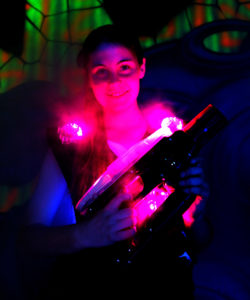How to Zap COVID-19 in Your Facility
By Erik Guthrie, Ricky Dillard and Victor Miller
Start Your Plan Now
We have to start planning for the restart of our industry. Unfortunately, there is no button that we can just push and everything goes back to normal. We’re going to have to restart a lot of processes that we shut down very quickly and we need to start to plan for this prior to reopening.
 What steps should you take to ensure you, and most importantly your team, are ready and that things go smoothly as we transition back into operation amidst COVID-19?
What steps should you take to ensure you, and most importantly your team, are ready and that things go smoothly as we transition back into operation amidst COVID-19?
First, you’ll want to keep a lot of the precautions you put into place as this pandemic was ramping up: the cleaning practices, as well as customer interaction. Because until a cure or vaccine is found, you will want to keep your team and customers healthy and safe. Here are some tips you may find useful:
How Do I Clean My Equipment?
The only thing that will not impact the integrity of your equipment at all is soap and water – but this will have limited effect on sanitizing your equipment. We generally recommend 80-90% isopropanol solutions as these will be most effective against germs. However, over the lifetime of Polycarbonate components, you may experience discoloration and structural integrity being compromised (making the Polycarbonate brittle). We do not recommend chlorine, UV or H2O2 based sanitizers, as these will result in excessive or rapid corrosion of components.
Any conductive sensitization methods should be undertaken with the equipment switched off and fully depowered to reduce risk of equipment damage.
How Do I Clean My Center?
If surfaces are dirty, they should be cleaned using a detergent or soap and water prior to disinfection. For disinfection, diluted household bleach solutions, alcohol solutions with at least 70% alcohol, and most common EPA-registered household disinfectants should be effective. Diluted household bleach solutions can be used if appropriate for the surface. Follow manufacturer’s instructions for application and proper ventilation. Check to ensure the product is not past its expiration date. Never mix household bleach with ammonia or any other cleanser. Unexpired household bleach will be effective against coronaviruses when properly diluted.
Best Practices for the Center
• Place hand sanitizer everywhere
• Stock disposable materials for hand-drying
• Ensure surfaces should be sprayed and wiped regularly
• Staff should wear disposable gloves and aprons when needed for all tasks in the cleaning process, including handling trash.
• Cleaning staff and others should clean their hands often, including immediately after removing gloves and after contact with any person, by washing hands with soap and water for 20 seconds.
• If soap and water are not available and hands are not visibly dirty, an alcohol-based hand sanitizer that contains 60%-95% alcohol may be used. However, if hands are visibly dirty, always wash hands with soap and water.
• Gloves and aprons should be compatible with the disinfectant products being used.
• Gloves and aprons should be removed carefully to avoid contamination of the wearer and the surrounding area. Be sure to clean your hands after removing gloves.
Operational Tips: Before Reopening & Initial Restart
- During the first phase of rolling out, the operator may choose to limit the number of players to 10 at a time. Once the state and/or local government has allowed for larger-sized groups to gather, the operator can add more players.
- To help drive traffic if customers initially don’t start to return on their own, a good idea might be for the operator to offer exclusive, birthday party use of the arena.
- During the downtime before reopening, operators should be scrubbing down every surface, every chair, every table and all surfaces. (That is what we’ve have had our management team do during this down time.)
- We are going to move to a no-contact transfer of objects so, if we serve a drink or a slice of pizza, those items will be placed on the counter and not handed to the customer.
- Another operations tip would be to rotate packs during each game. So packs 1-10 go in the first game, packs 11-20 go in to the second game, and packs 21-30 can go into the third game. While one set of 10 packs are in the game, the ones that were worn in the previous game can be properly cleaned and disinfected.
- Operators should consider sneeze guards for the counters similar to what is being placed at drive-thrus and gas stations.
- An operator may consider utilizing a no-contact infrared thermometer to take the temperature of guests at the door.
- Ultimately, the operator needs to utilize “Cleanliness Theater” to give customers the assurance that the laser tag operations are safe and clean.
- An operator could place hand sanitizers by the front door and require all customers coming in to use the hand sanitizers before entrance.



